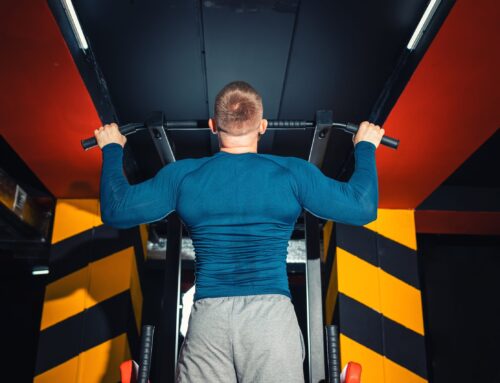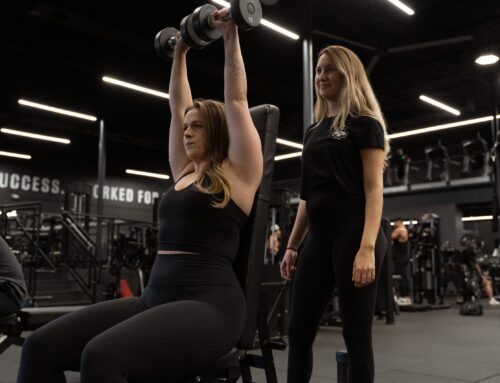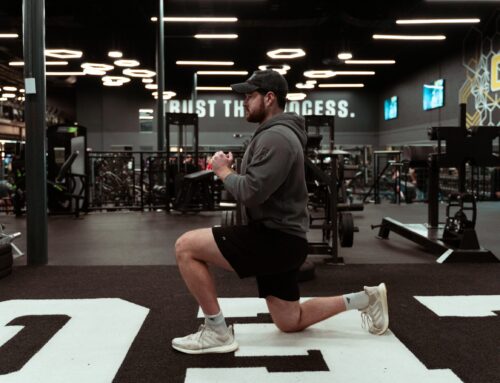Building core strength is not just about achieving a toned midsection; it is essential for overall physical health and peak performance. Strong core muscles are the central link between your upper and lower body, supporting everyday movements and complex athletic maneuvers. By incorporating weighted ab exercises, you further intensify your core training, ensuring that your muscles develop evenly for better balance, stability, and posture.
Keep reading to learn more about the importance of core strength, the critical role of lower abs in establishing a solid foundation, and why you need weighted ab exercises for accelerated muscle growth and enhanced functional fitness.
Why Train Your Abs Like Any Other Muscle Group?
Much like your chest, arms, or legs, your abs need to be challenged to grow stronger. Treating your abdominal muscles with the same approach, using progressive overload, ensures they receive the right stimulus for growth and development.
Simply doing more reps won’t always lead to better results; your muscles adapt quickly, and without added resistance, they might reach a plateau.
By increasing the difficulty, whether by adding weight or changing the intensity of your movements, you trigger muscle-building processes like hypertrophy. This doesn’t just make your abs look more defined; it means they’ll actually function better, supporting your body during lifts, twists, and daily motion. Over time, you’ll not only notice visual improvements but also feel a difference in your overall strength and stability.
What Are Ab Muscles?
Also known as the abdominal muscles, ab muscles form the abdominal wall, including the external and internal obliques. Ab muscles play a crucial role in overall stability and protection of internal organs.
Abdominal muscles are made up of a unique set of muscle groups, including:
- The anterolateral muscles (front and side)
- The posterior muscles (back)
A strong core is fundamental to maintaining balance and stability and enabling better muscle coordination during athletic activities and everyday tasks. Think about it – lifting objects, bending, reaching – all these daily tasks become easier with a fortified core.
Mastering the Weighted Abdominal Crunch
The weighted abdominal crunch is a foundational exercise in any effective weight training abdominal exercises program. While the standard crunch is a great starting point, adding resistance is crucial for stimulating muscle growth and achieving a truly defined core. This exercise specifically targets the rectus abdominis, the muscle responsible for the coveted “six-pack” appearance.
To perform a weighted abdominal crunch correctly:
- Starting Position: Lie on your back with your knees bent and feet flat on the floor. Hold a weight (a dumbbell, weight plate, or kettlebell) securely against your chest.
- Execution: Exhale and engage your core to lift your shoulder blades off the floor, bringing your ribcage towards your pelvis. Focus on using your abdominal muscles to initiate the movement, not your neck or arms.
- Peak Contraction: Squeeze your abs at the top of the movement for a moment.
- Return: Inhale as you slowly lower yourself back to the starting position with control.
For optimal results, aim for 3-4 sets of 10-15 repetitions. Choose a weight that challenges you to complete the set with good form, but isn’t so heavy that it causes you to strain your neck or lower back.
The Advantages of Starting with Lower Abs
Beginning with lower abs exercises is strategic for improving core stability and reducing the risk of injury, but there’s more to it. The lower abs are often the weakest link in our core, requiring more energy and focus to engage properly. By targeting these muscles first, when your energy levels are highest, you increase your chances of having the correct form, maximizing the exercise’s effectiveness.
Weighted Lower Ab Moves
Some good lower ab exercises to try include:
- Leg raises: Lie flat on your back, lift your legs straight up, and then lower them without touching the floor to engage the lower abs. Add a dumbbell between your feet for added weight, or strap on ankle weights.
- Scissor kicks: With ankle weights, start on your back with legs lifted and alternate crossing them over each other in a scissor-like motion.
- Seated leg lifts: Sit on the edge of a bench or chair, lean back slightly, and lift your legs up and down without touching the ground. Hold a dumbbell between your feet to add weight.
- Hanging knee raises: Hang from a pull-up bar and raise your knees towards your chest to target the lower abs. Wear ankle weights or hold a dumbbell between your feet.
- Reverse crunches: Lie on your back, place your hands behind your head, and lift your hips and knees towards your chest, then slowly lower them back down. To add weight, hold a kettlebell or dumbbell to your chest.
- Mountain climbers: Start in a plank position and alternate driving your knees towards your chest, keeping your core tight. For resistance, loop a resistance band around your feet or wear a weighted vest.
- V-ups: Lie on your back, extend your arms behind your head, and in one motion, lift your legs and upper body to form a “V” shape. Keep your knees bent for an easier variation. Hold a dumbbell between your feet and/or over your head for added weight.
Your Ultimate Weight Abs Workout
To take the guesswork out of your training, here is a sample weight abs workout designed to target your entire core. Perform this routine 2-3 times per week, with at least one day of rest in between to allow for muscle recovery.
| Exercise | Sets | Reps | Rest |
|---|---|---|---|
| Weighted Abdominal Crunch | 3 | 12-15 | 60 seconds |
| Hanging Knee Raises | 3 | 10-12 | 60 seconds |
| Russian Twists (with eight) | 3 | 15 (each side) | 60 seconds |
| Weighted Planks | 3 | 60 sec hold | 60 seconds |
This workout provides a balanced approach, targeting the upper abs, lower abs, and obliques for comprehensive core development. Remember to focus on quality over quantity, maintaining proper form throughout each movement.
Maximizing Muscle Engagement with Weighted Ab Exercises
Weighted ab exercises are like the next level in your core training journey. They trigger muscle groups differently compared to body weight movements, activating stabilizer muscles and intercostals more effectively. But remember, it’s important to use weights that provide a challenge yet are manageable to maintain proper form.
Incorporating free weights like dumbbells, kettlebells, and plates into ab workouts offers several benefits:
- Increases resistance, which challenges core muscles and leads to increased strength
- Adds versatility to exercise routines by giving variations and intensity modifications
- Makes your workout routine more exciting and engaging
But the perks don’t stop there. Weighted ab exercises mean you can spend less time cranking out endless reps—instead, you’re getting more training stimulus with fewer reps. Since your core muscles respond to resistance just like any other muscle group, loading them up is key if you want to build real strength and visible muscle. A stronger core isn’t just for show, either; it sets off a chain reaction throughout your training, helping you brace and stabilize during heavy lifts like squats and deadlifts, and even promoting better posture day-to-day.
Don’t shy away from adding weight to your ab work. Your core is the foundation for almost every movement, and stronger abs mean better performance across the board—whether you’re lifting, running, or just trying to sit a little taller at your desk.

Weighted Core Exercises to Try
Some of the best weighted ab exercises include:
- Weighted Planks: Adding weight plates on your back during a plank can increase core stability and endurance.
- Russian Twists with Medicine Ball: Holding a medicine ball while doing Russian twists adds resistance, targeting your obliques and entire core.
- Dumbbell Side Bends: Holding a dumbbell in one hand and bending to the side works the oblique muscles on the opposite side.
- Cable Crunches: Using a cable machine to perform crunches provides constant tension, working the rectus abdominis effectively.
- Weighted Leg Raises: Adding ankle weights or holding a medicine ball between your legs during leg raises increases resistance for the lower abs.
- Decline Bench Sit-ups with Weight: Performing sit-ups on a decline bench while holding a weight to your chest intensifies a traditional sit-up.
- Weighted Bird Dogs: Adding ankle and wrist weights while doing bird dogs challenges your core stability and strength.
- Kettlebell Windmills: This exercise engages the entire core, especially the obliques, and improves shoulder stability.
You can adjust these exercises in weight and intensity to suit your fitness level and goals, ensuring a challenging and effective core workout.
Home Equipment Alternatives for Weighted Ab Training
Not everyone has access to a fully equipped gym, but that shouldn’t limit your ability to perform effective ab exercises with added resistance. Creating an effective abs equipment workout at home requires creativity and understanding of how everyday items can substitute for traditional weights.
Budget-Friendly Weight Alternatives
Water Jugs and Bottles: Fill gallon jugs or large water bottles to create adjustable weights. Start with partial fills and gradually add more water as you progress. These work excellently for weighted crunches and Russian twists.
Books and Textbooks: Heavy books provide stable, easy-to-grip weights for most weight training abdominal exercises. Stack multiple books and secure them with tape for heavier resistance.
Backpack Loading: Fill a backpack with books, canned goods, or water bottles to create a versatile weighted vest alternative. This works particularly well for weighted planks and mountain climbers.
Resistance Bands: While not technically weights, resistance bands can simulate the constant tension of cable machines for exercises like woodchoppers and anti-rotation movements.
Maximizing Home Equipment Effectiveness
The key to successful home ab exercises lies in progressive overload, just like gym-based training. Start with lighter household items and gradually increase resistance by adding more weight or choosing heavier alternatives. Focus on maintaining perfect form rather than using the heaviest possible weight.
Remember that consistency trumps equipment quality. A regular routine using household items will deliver better results than sporadic gym sessions with perfect equipment.
Leveraging Weight Machines for Core Training
Weight machines are effective tools for core training. They offer consistent resistance and targeted muscle isolation, which can lead to increased muscle mass. This aids in defining abs and improving overall core strength, making them a great alternative or addition to bodyweight exercises. A dedicated abs equipment workout can be a valuable part of your routine.
Weight machine ab exercises are also helpful for beginners or individuals looking to learn new exercises and isolate specific muscles.
Some of the best weight machines for core training include:
- The Cable Machine: With its adjustable height and dual cables, it allows for a wide range of core exercises, including cable crunches, woodchoppers, and standing rotation movements.
- The Captain’s Chair: Also known as a Power Tower, this machine is fantastic for hanging leg and knee raises, which target the lower abs and obliques.
- The Seated Ab Crunch Machine: This machine simulates ab crunches with added resistance, focusing on the rectus abdominis muscle.
- The Torso Rotation Machine: This targets the oblique muscles and helps improve rotational strength, which is important for core stability and daily movements.
- The Back Extension Machine: While primarily targeting the lower back, it also engages the core and is essential for a well-rounded core workout routine.
Try these machines next time you’re at the gym. Start with a lower, manageable weight and three to four sets of six to eight reps.
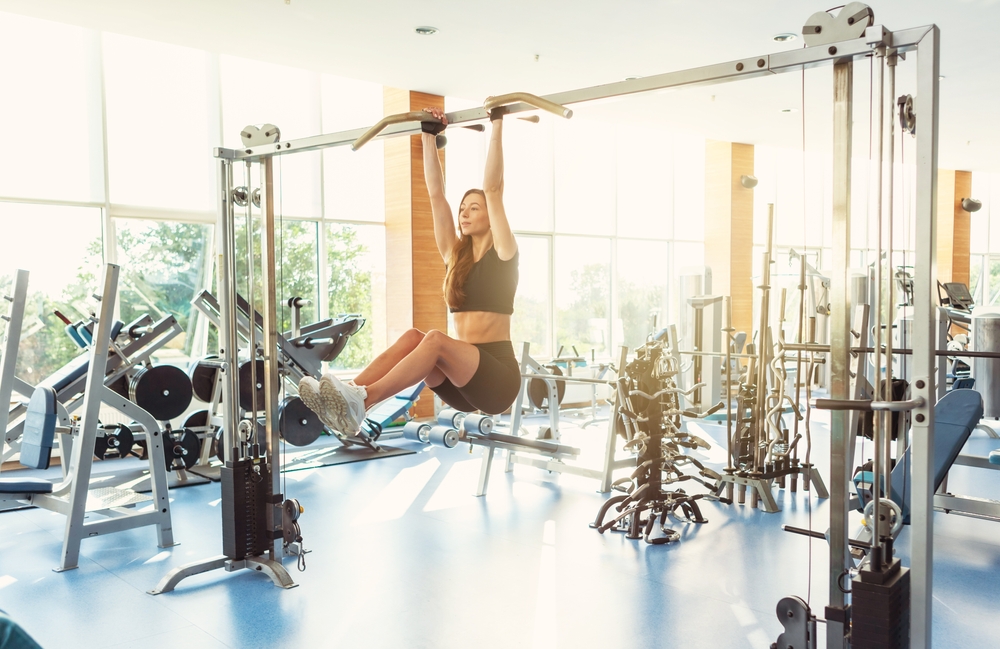
Enhancing Core Strength with Plyometric Ab Exercises
Plyometric exercises, or “plyo” for short, are dynamic and high-velocity movements that enhance muscular power and explosiveness. This type of training improves athletic performance by increasing the speed and force of muscle contractions.
The benefits of plyometric exercises include:
- Increased Muscle Strength: Plyometrics are excellent for building both the strength and efficiency of the fast-twitch muscle fibers, leading to enhanced overall muscle power.
- Improved Athletic Performance: Athletes benefit from plyo exercises as they simulate the motions used in sports, such as jumping, sprinting, and throwing, which can lead to better performance in their respective sports.
- Enhanced Coordination: These exercises require precise body control and timing, which can improve coordination and neuromuscular conditioning.
- Boosted Cardiovascular Fitness: Due to their high-intensity nature, plyometric exercises can also serve as a cardiovascular workout, improving heart health and endurance.
- Increased Metabolism: As plyometric exercises are intense, they can help in burning a significant amount of calories, thereby boosting metabolism.
- Improved Bone Health: The weight-bearing aspect of plyometric training can increase bone density and strength, reducing the risk of osteoporosis.
- Better Balance and Stability: Plyometric training often involves unilateral exercises that can improve balance and stability by strengthening the muscles and joints.
Plyometric exercises are renowned for boosting intensity and power, and when applied to abdominal workouts, they can be transformative for core strength. Plyometric ab exercises utilize explosive movements to dynamically engage and strengthen the core. The V-up is a prime example of a plyometric ab exercise that challenges the core through rapid, energetic movements.
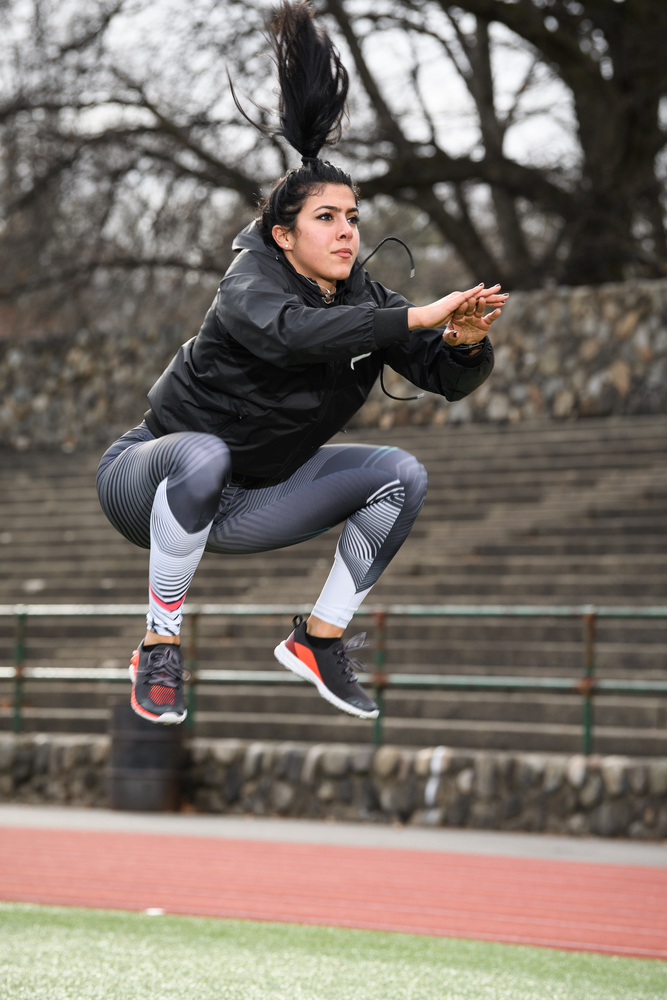
Plyo Moves for Core
Some plyometric exercises that target the core include:
- Box Jumps: Explosive jumps onto a box or platform engage the lower abs and hip flexors.
- Medicine Ball Slams: Slamming a medicine ball to the ground from overhead height works the entire core.
- Burpees: This full-body exercise involves a squat, jump, and push-up, engaging the core throughout the movement.
- Mountain Climbers: Rapidly alternating knee drives toward the chest challenge the core’s stability and endurance.
- Plyometric Push-Ups: Pushing off the ground with enough force for the hands to leave the floor strengthens the core and upper body.
- Standing Long Jumps: Jumping forward from a standing position to clear distance engages the core for stability and power.
- Tuck Jumps: Jumping and tucking the knees to the chest at the peak of the jump engages the lower abs.
- Star Jumps: Jumping from a crouch while hugging the knees into a star shape with arms and legs extended fully engages the core muscles dynamically.
Elevating Core Workouts: Incorporating Resistance Bands
Resistance bands are a fantastic addition to any workout routine, especially when it comes to core strengthening. They provide variable tension and focus on both muscle strength and endurance while enhancing stability and muscle lengthening contraction. Incorporating resistance bands into exercises like:
- Banded Bridges: Elevate your hips with a resistance band above your knees for a stronger posterior chain.
- Mermaid Twists: Work your obliques by twisting with a resistance band across your body while seated.
- Banded Dead Bugs: Coordinate opposite arm and leg extensions with a resistance band around your feet for core engagement.
- Banded Plank Walks: Sidestep in a plank position with a band around your ankles to challenge your core stability.
- Mountain Climbers: Drive your knees in a plank for a cardio boost and core strengthening.
- Controlled Rollups: Engage your abs with a deliberate sit-up, reaching for your toes and slowly returning down.
- Russian Twists: Rotate with a weight for oblique and core activation, alternating sides.
- The Pallof Press: Stand with a resistance band or cable at chest height. Engage your core and push the handle or band straight out from your chest, then return to start. It’s a powerful move for strengthening core stabilizers and enhancing rotational strength.
What’s more, resistance bands offer a convenient way to work your core anywhere—whether you’re at home, in the gym, or on vacation.
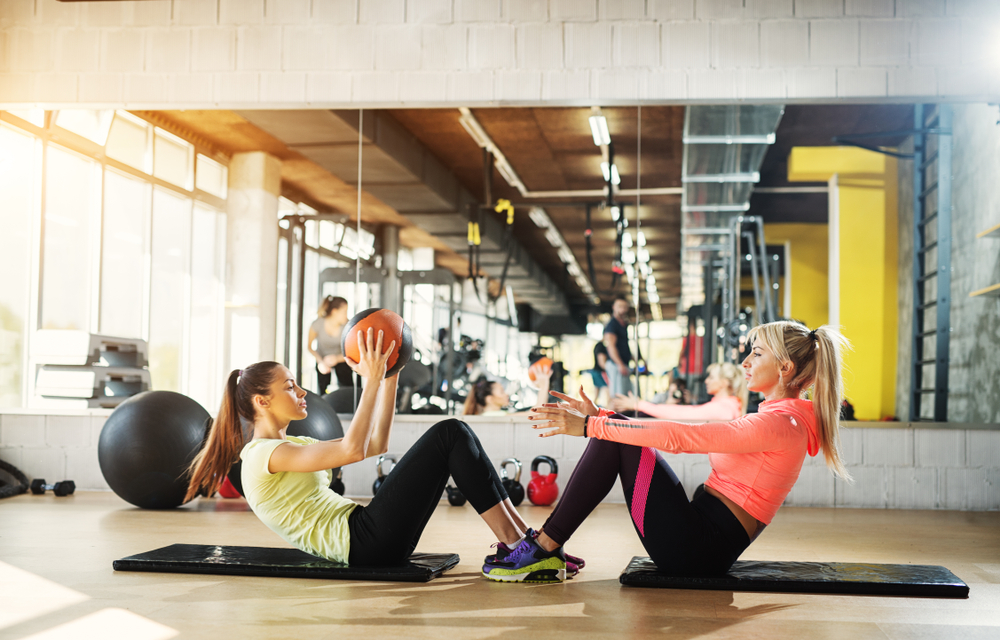
Best Practices for Safe and Effective Weighted Ab Workouts
As with any workout, prioritizing good form during weighted ab exercises is essential. Proper alignment and mind-to-muscle movement are key to effectively working the targeted muscles and reducing injury risk.
If an exercise feels too challenging, reduce the number of repetitions, weight, hold time, or try an easier variation to prevent strain and injuries.
As exercises become easier to perform with the correct technique, gradually increase the difficulty. If you experience any sharp, severe pain during core exercises, especially in the lower back, it’s crucial to stop immediately and consult with a healthcare professional before resuming.
Diastasis Recti and Ab Workouts
Your core is made up of a group of muscles that work together to support your frame and day-to-day movement. This group includes the rectus abdominis muscles, which are the “six pack” muscles that run parallel down the front of the abdomen.
When the rectus abdominis muscles sustain too much pressure, they can stretch and pull apart. This separation, called diastasis recti, most often occurs during pregnancy but can also happen during intense core workouts or from excess belly fat. A tell-tale sign of diastasis recti is if your abdomen forms a cone, bread loaf, or dome shape during a crunch, and you feel as if your organs are “spilling out.”
Additional diastasis recti symptoms include back pain, pelvic floor dysfunction, hernias, constipation, and pelvic pain.
The best way to treat or prevent diastasis recti is to focus on engaging the internal core muscles and keep your abs flat during core workouts or core-intensive movements. Think of pushing your belly button towards your spine. Most recommend avoiding movements that put too much pressure on the rectus abdominis, such as planks, crunches, and mountain climbers.
While it’s not completely necessary to avoid ab-intensive workouts, proper form and core engagement are crucial. Please consult with a personal trainer or pelvic floor specialist if you believe you have diastasis recti or if you struggle with proper form during ab workouts.
Get Toned with Carbon Performance in the Southeast
Incorporating weights into your core workouts can lead to incredible results—increased balance, stability, and overall physical performance. Whether it’s through weighted ab exercises, plyo exercises, leveraging weight machines, or incorporating resistance bands, the possibilities are endless.
So, take the plunge, challenge yourself, and witness the transformation in your core strength by joining us at a Carbon Performance location near you. Our team of skilled personal trainers can help curate a customized exercise program for you, to help you better reach your fitness goals. Allow Carbon Performance to join you on your journey.
